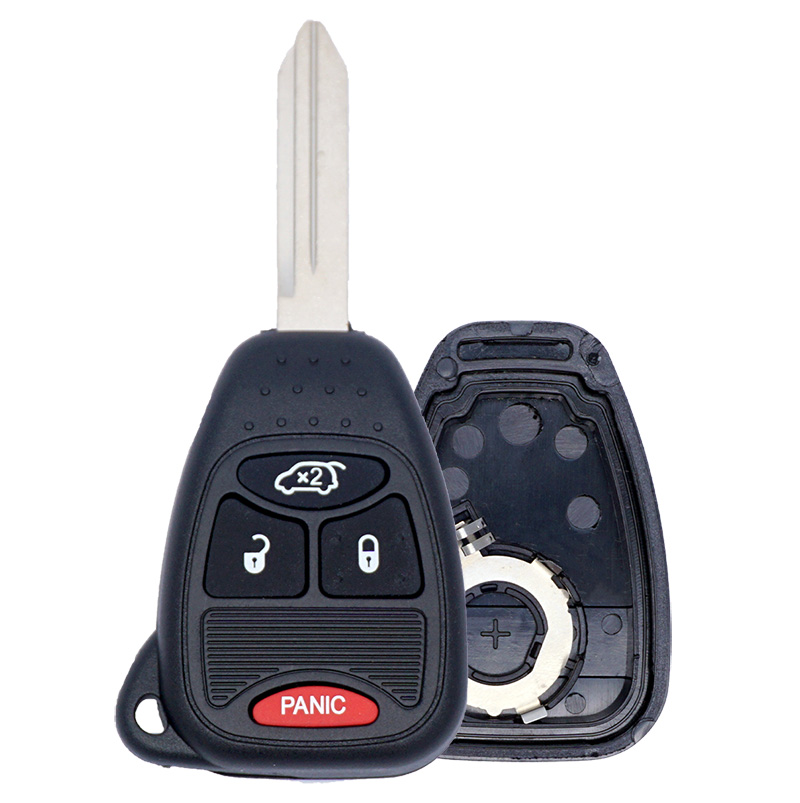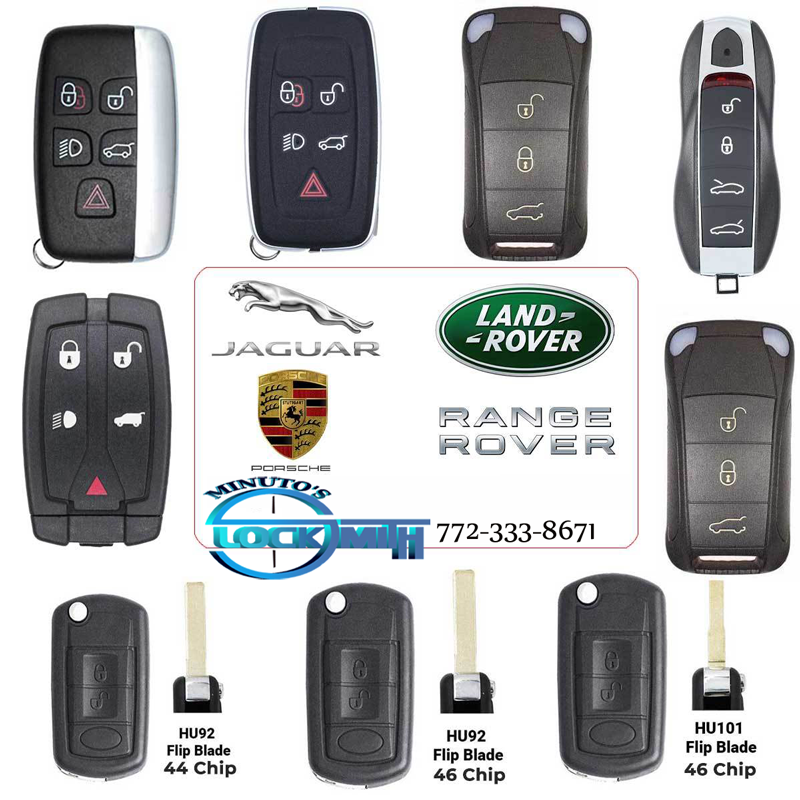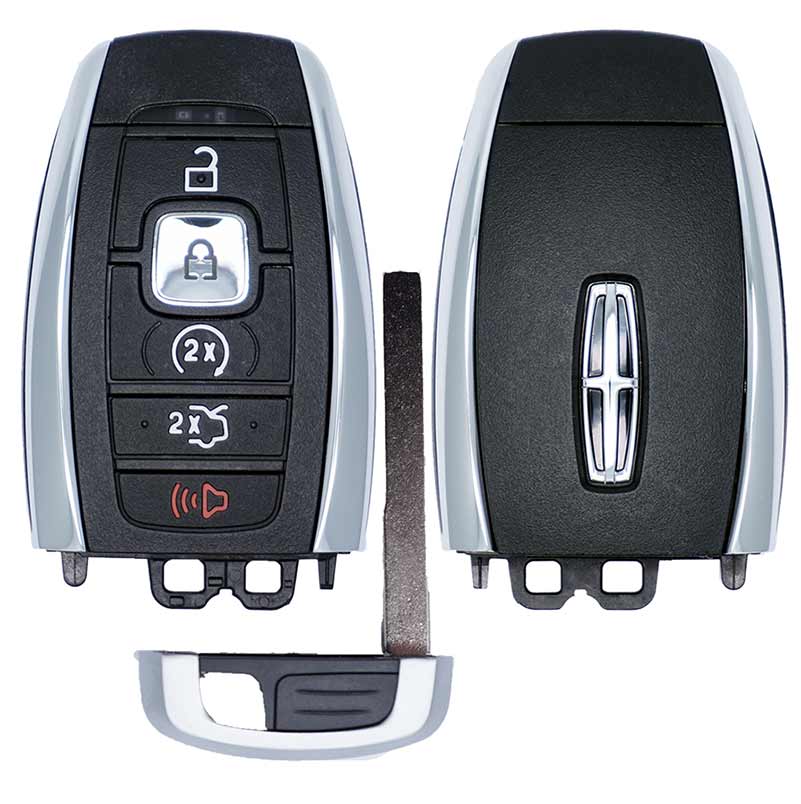History of Key Programming
Just as the phone you carry today has undergone significant transformations compared to the telephones of the past, keyless entry systems have also experienced a profound evolution since their initial introduction. This ongoing progress is marked by the constant addition of new features, advancements in technology, and expanded capabilities.
Learn More History
Ford is generally credited with the introduction of the first keyless entry system in 1980. That original system was used on just four vehicles: the Ford Thunderbird, Mercury Cougar, Lincoln Continental Mark VI and Lincoln Town Car. The system consisted of a numeric keypad mounted on the exterior of the vehicle that would give access to the vehicle without using a key. The keypad had a hardwired code that had two functions. It was the default code if the vehicle lost power for some reason, and it was also used to program the user’s personal code into the system. This same basic system is still in use today on many Ford and Lincoln vehicles.
The first vehicle to use a radio frequency remote key-fob was the 1982 Renault Fuego, which was not sold in the U.S. At that time, Renault and American Motors had a partnership, and in 1983 this system first appeared on the 1983 Renault Alliance that was built in the USA and marketed by AMC. A sister vehicle, the AMC Encore, also used this system in 1984. Soon, remote keyless entry systems began to appear on many other vehicles in North America. Today it is hard to find a new vehicle that is not equipped for remote keyless entry.
Ten years later, GM introduced the first passive keyless entry system on the 1993 Corvette. This system would automatically unlock the door(s) as the owner approached the vehicle. (The user could select whether to unlock either the driver’s side door or both doors.) It would also automatically lock the doors, set the alarm, and sound the horn as the owner walked away from the vehicle. Unlike modern proximity systems, this system used a type of motion detector inside the remote that would transmit whenever the device was in motion. As a result, the battery life of the remotes was relatively short. This system was plagued with problems, tended to annoy the owners and their neighbors and was soon discontinued. (Imagine your next door neighbor mowing his lawn while his car horn honks every time he moves away from his car.) But the concept of a passive entry system was launched and the engineers learned a lot from that early system.
The first modern passive keyless entry system was developed by Siemens in 1995, and originally implemented by Mercedes on the 1998 S-Class sedan, replacing the Mercedes infrared remote entry system. Mercedes called the system “Keyless-Go” and it looked a lot like a modern FOBIK. The door entry system used a radio frequency system, but the ignition was controlled by an infrared system built into the fob. On early vehicles, the fob had to be inserted into a socket and turned to start the vehicle. Later vehicles used a push-button start. Similar systems are now in use by over 30 manufacturers worldwide.
As a general rule, the doors are unlocked by way of a Low Frequency (LF) signal generated by the car that triggers the fob to transmit its ID signal. The LF signal is transmitted from a series of antennas mounted around the vehicle in strategic places such as in the trunk lid, door handles, around the edge of the roof, etc. The LF signal is triggered when the user presses a button built into the door handle, pulls the door handle, touches a membrane switch, or in some cases waves their foot under the rear bumper of the vehicle.
On modern proximity systems, the same basic thing goes on inside the car when the user presses the start button or turns the start-knob. The LF signal inside the car triggers the fob to transmit its ID to the vehicle and then the vehicle starts. For security reasons, the LF signal used inside the vehicle is very limited and tuned to cover specific areas of the interior. Insurance carriers in the UK have developed a standard that is now used almost universally that limits the ability of the fob to start the vehicle. The fob should be unable to start the vehicle if it is more than 10 centimeters (slightly less than four inches) outside the vehicle. This is primarily intended to eliminate the possibility of someone starting or stealing the vehicle while the owner is standing nearby, such as when refueling.
Why are the manufacturers pushing this technology? The simple answer to that question is that the manufacturers are trying to drive more business back to the dealerships. The thinking goes that as the owners lose, misplace, or damage the remote fobs, they will have to return to the dealerships for new fobs and programming. Once at the dealership, management hopes that they may buy other accessories, or even a new car. This is one reason why the frequencies of the fobs, button functions, and design of the fobs are constantly changing, in the hopes of discouraging competition from people like us.
As a locksmith we compete in the area of remote fobs and programming, directly with the dealerships and the auto parts stores. One of the chief advantages that we have in this market is that we offer key replacement, which is something that auto parts stores do not offer and dealerships only offer at much higher prices and much longer wait times than Minuto’s Locksmith. We have invested in inventory, equipment, and advertising. to offer you an option to replacement on remotes and keys
On Board Programming
Programming of remotes falls into two categories: on-board programming and diagnostic tool programming. On-board programming means that the remote programming procedure is built into the operating system of the vehicle. The remote is programmed by executing a series of operations using various electronic components that are incorporated into the vehicle. These operations can also include jumping connections in the OBD port, removing and replacing fuses, opening and closing doors etc.
Diagnostic Tool Programming
On-board programming began going out of style with the manufacturers about ten years ago. Gradually, programming procedures that require diagnostic equipment began replacing on-board procedures. However, even today, some vehicles may have on-board procedures that can be used in addition to the procedures that require a diagnostic tool. If you really want to get into selling keyless remotes, you simply can’t get by today without a diagnostic device.
In my truck, I carry four different diagnostic devices at all times and I can already see the need for at least two more. I don’t use all of those tools for remotes, but all of them have at least some remote programming capabilities.
Proximity FOB's programming
Proximity (prox) fobs take everything to the next level. If there are any out there that do not require a diagnostic tool for programming, I have never dealt with it. Most of the early prox fob systems incorporated a programming slot somewhere on the vehicle that new fobs had to be inserted into in order to program them. As the technology improved, the programming slots are disappearing and many fobs can be programmed while simply being inside the vehicle or by touching or holding the fob near the start button.
We sell, program and replace all lost key fobs
Satisfied





As highly experienced and certified Master locksmith professionals, we deeply understand the paramount importance of possessing extensive knowledge, acting swiftly, and ensuring utmost security for our valued clients. That’s precisely why we place our unwavering trust in the expertise of our professional services to flawlessly retrieve your key code with absolute precision and accuracy.

Free quote on your Vehicle
Head Office
719 SE Atlantus Ave Port Saint Lucie FL 34983
Call Us
772-335-5555
